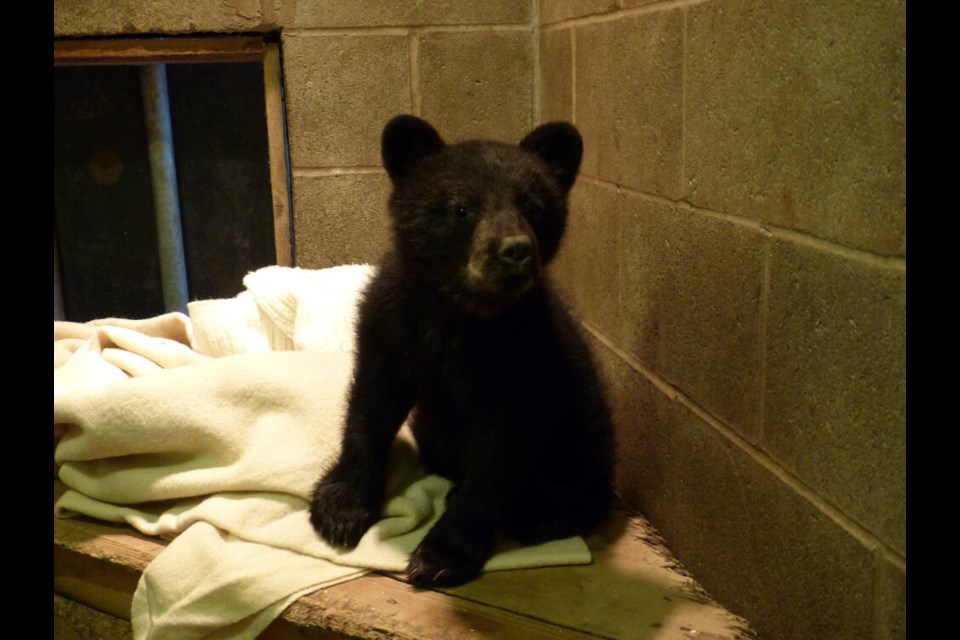A tiny bear cub likely separated from its mother and seeking shelter wandered into a Campbell River home through an open door on Tuesday.
The cub was rescued by the Conservation Officer Service and delivered to the North Island Wildlife Recovery Centre near Errington, where it is receiving food and care and will be a candidate for release in a year, said Robin Campbell, a bear specialist at the centre.
The cub weighed 13.8 pounds and is estimated to have been born in January or February in a den during hibernation, said Campbell.
Conservation officer Steve Petrovcic, who answered the call with RCMP, said the cub had treed itself outside the home in the Ocean Grove neighbourhood and was darted with a tranquilizer. Once the drug took effect, he said the cub fell several metres into a blanket held by a wildlife vet and others at the scene.
Petrovcic said there were no signs of a mother bear after conservation officers searched the area and canvassed the neighbourhood. The cub showed a “healthy fear of people,” was physically in good condition and had an appetite, which made it a good candidate for the recovery centre, he said.
Campbell said the sex of the cub hasn’t yet been determined and the cub has not been thoroughly checked because caregivers don’t want to add extra stress so early after capture.
“Physically it looks good, and being fed out of a bowl … we just need some time for it to get used to where it is,” said Campbell. “As you can imagine, it’s pretty strange for the cub now and it’s very scared of people. Going from its mother to capture is really challenging for any little bear.”
Campbell said the rescue of a cub from inside a home is “definitely a first” for the North Island Wildlife Recovery Centre, which has seen hundreds of black bear cubs over 30 years.
In most cases, the mother has been killed, said Campbell. “There always a sad reason.”
So what do you feed a young cub? Bear milk formula, he said, along with apple sauce, cottage cheese, yogurt, pablum, a little puppy food and a blend of sardines and water. After a few more weeks, fruits and vegetables will be added to its diet.
“Right now we’re just trying to settle [the cub’s] tummy,” said Campbell. “It’s going to be a long journey for this little guy.”
The cub, currently in isolation, will be raised at the recovery centre for about a year, going through several stages and pens, with the final being an area where it builds its own den and hibernates.
Campbell said the cub will then be released back into the Campbell River area, where there are similar black-bear bloodlines.
Later this month, the centre is planning on releasing six black bear cubs that have been raised at the centre since last year. They are fitted with collars with information about each one, so they can be tracked into adulthood.
Campbell expects more cubs to be delivered to the recovery centre this spring and summer, as humans and bears are increasingly coming into contact.
Conservation officers are reminding people to secure their garbage and recycling and make sure other attractants like fruit and pet foods are not left out, so bears have no reason to linger in urban areas.
Campbell estimates there are about 7,000 black bears on the Island.
The Vancouver Island black bear is one of six subspecies in B.C., and is darker and slightly bigger than its counterparts.



